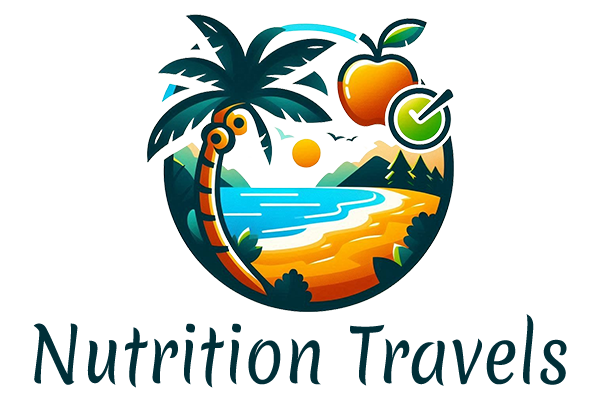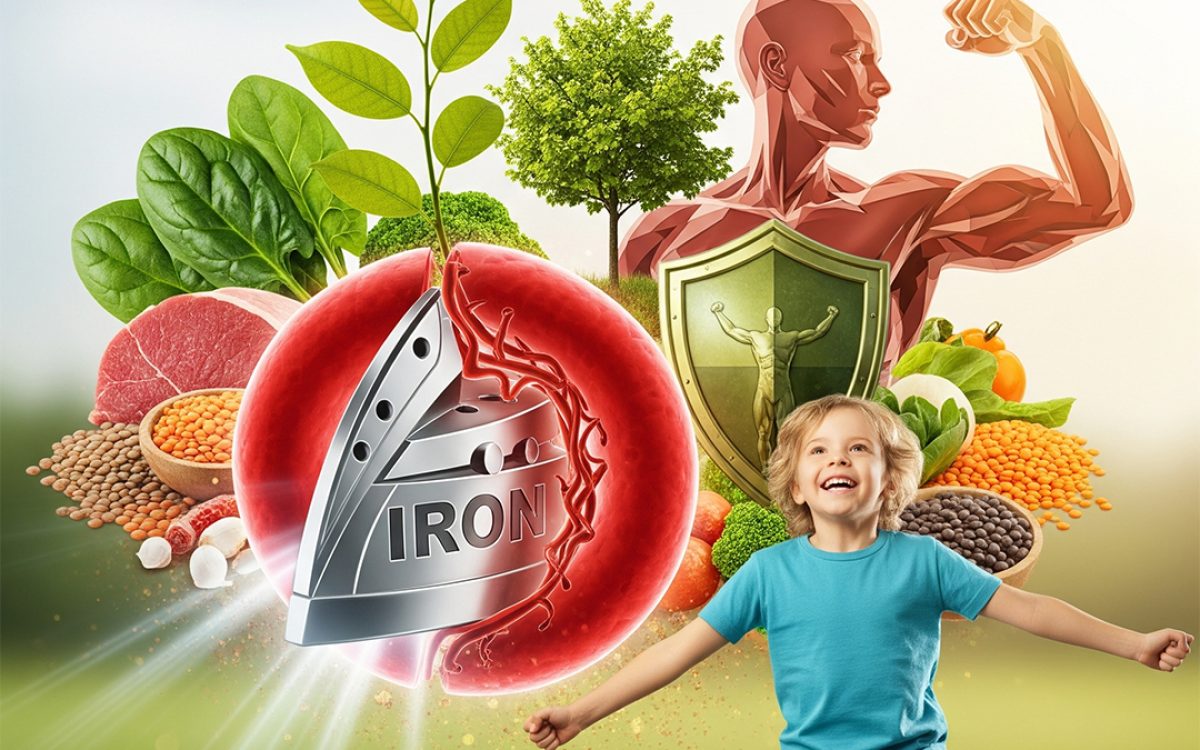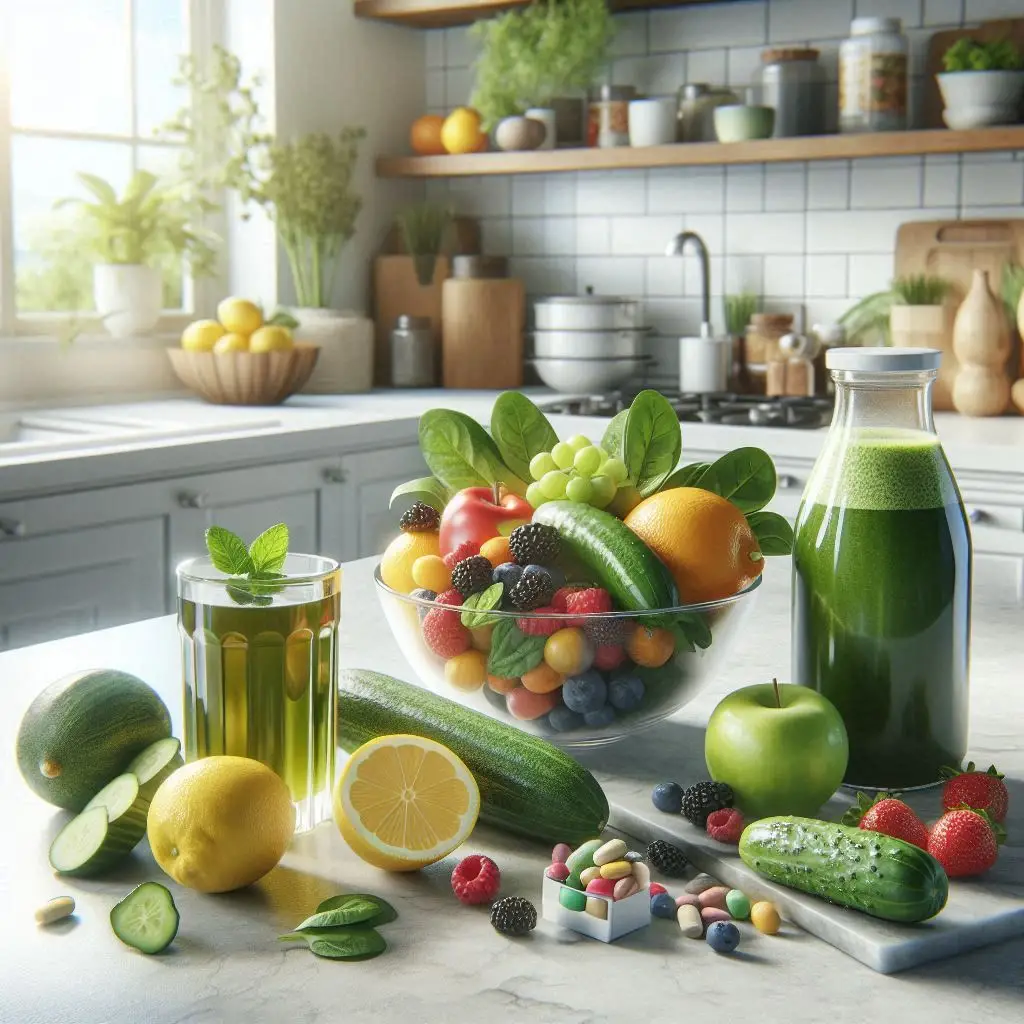Iron is one of the essential nutrients that are indispensable, especially for children’s growth and healthy development . It is not merely a mineral, but rather the cornerstone of many vital processes inside their small bodies. Iron deficiency in children’s growth, also known as depleted iron stores, can be a common problem and, in some cases, may lead to a condition called iron deficiency anemia.
This article is your complete guide, dear parent, to understanding the importance of iron, identifying the groups most at risk, recognizing the symptoms to watch for, and learning how to prevent this condition.
The Vital Importance of Iron in Children’s Growth

Iron plays a central role in our children’s growth, as it is involved in essential functions that affect their physical and mental health. Its importance includes:
1. Oxygen Transport:
Iron is a key element in forming hemoglobin, the protein responsible for carrying oxygen in red blood cells. Without enough iron, hemoglobin levels drop, reducing the blood’s ability to carry oxygen from the lungs to all parts of the body. This lack of oxygen can make a child feel tired and weak.
2. Brain and Nervous System Development:
Iron plays a vital role in brain growth and development, especially during the early years of a child’s life. It contributes to the formation of nerve cells and impacts cognitive abilities and learning. Iron deficiency at this critical stage can negatively affect mental development and cognitive skills.
3. Strengthening the Immune System:
Iron supports immune system functions, making the body more capable of resisting diseases and infections.
4. Healthy Physical Growth:
Iron is involved in the growth of bones, muscles, and cells, and is essential for proper physical development.
5. Prevention of Anemia:
Iron deficiency is the leading cause of anemia in children. Anemia causes symptoms such as fatigue, weakness, and difficulty concentrating, which directly affect your child’s quality of life and daily activity.
Daily Iron Requirements for Children:
Children’s iron needs vary depending on age, as each growth stage requires a specific amount to maintain healthy development. Here’s a table showing the recommended daily amounts:
| Age Group | Recommended Daily Amount |
|---|---|
| 7–12 months | 11 mg |
| 1–3 years | 7 mg |
| 4–8 years | 10 mg |
| 9–13 years | 8 mg |
| 14–18 years (girls) | 15 mg |
| 14–18 years (boys) | 11 mg |

Iron in Children’s Growth: Top Sources for a Strong Diet :
After discussing the importance of iron in children’s growth and the symptoms of its deficiency, we now move to the more practical part: how to ensure your child gets enough of this vital mineral from food.
Iron sources are divided into two main types: Heme Iron and Non-Heme Iron , and the body absorbs them at different rates.
- Heme Iron: Found in animal-based foods such as meat, poultry, and fish. This type of iron is absorbed easily by the body, making it an excellent and effective source.
- Non-Heme Iron: Found in plant-based foods such as legumes, vegetables, and nuts. This type is less efficiently absorbed, but its absorption can be improved with a few simple steps.
Key Iron-Rich Foods for Children
To ensure your child gets enough iron, it’s important to diversify the foods you provide. Here’s a list of top iron-rich foods:
1. Animal Sources (Heme Iron):
Red Meat: Beef and lamb are among the best iron sources. You can serve them minced in meals like meatballs or sauces, or as thin grilled slices cut into small pieces for easy eating.
Poultry: Chicken and turkey, especially the darker cuts, are good sources of iron. They can be prepared in various ways such as grilling, boiling, or adding to soups.
Seafood: Some types of seafood like oysters, shrimp, and fish such as salmon and tuna are rich in iron, in addition to being excellent sources of omega-3 fatty acids that support brain development.

2. Plant Sources (Non-Heme Iron):
Legumes: Lentils, chickpeas, and beans are excellent plant-based options. You can make lentil soup, hummus, or serve beans for breakfast.
Dark Leafy Vegetables: Spinach and kale are rich in iron. They can be pureed or added to rice and pasta dishes.
Nuts and Seeds: Almonds, cashews, pumpkin seeds, and sunflower seeds are good sources of iron. Add them to breakfast dishes or serve them as snacks (avoid whole nuts for very young children to prevent choking hazards).
Dried Fruits: Raisins, dried apricots, and dates are nutritious and iron-rich snacks.
Fortified Breakfast Cereals: Many children’s breakfast cereals are fortified with iron, making them an easy and quick way to ensure daily intake.

Tips to Improve Iron Absorption in Children:
As mentioned earlier, non-heme iron from plant sources is less efficiently absorbed. However, you can greatly improve absorption by following these tips:
- Vitamin C is Iron’s Best Friend: Vitamin C is a strong helper for increasing the absorption of non-heme iron. Serve vitamin C-rich foods with iron-rich meals. For example, add lemon juice to lentil salad, serve sweet bell peppers or broccoli with lunch, or offer oranges and strawberries after the main meal.
- Avoid Caffeine with Meals: Tea and coffee contain compounds like tannins and caffeine that can block iron absorption. Avoid giving these drinks to children, especially with iron-rich meals.
- Variety is Key: To get enough iron, combine both animal and plant iron sources in your child’s diet.
- Cooking Method: Lightly cooking leafy greens helps break down fibers and makes iron easier to absorb.

How to Prevent Iron Deficiency for Healthy Iron in Children’s Growth :
- Prevention is always better than cure, and there are several steps parents can take to ensure children get enough iron:
- Breastfeeding and Supplements: If you are breastfeeding, speak to your pediatrician about the need for iron supplements, especially after 4 months of age. Supplements may be in the form of drops or included in multivitamins. If your child is formula-fed, ensure the formula is iron-fortified.
- Avoid Cow’s Milk Before One Year: Do not give cow’s or goat’s milk before your child’s first birthday, as it can interfere with iron absorption.
- Introduce Iron-Rich Solid Foods: When your child reaches 6 months, start introducing iron-rich foods such as iron-fortified cereals, pureed meats, or iron-rich vegetables like spinach.

Iron deficiency is a health challenge that many children face, but with awareness and the right knowledge, it can be prevented and managed effectively. By providing a balanced diet rich in iron and monitoring your child’s nutritional needs, we can ensure healthy growth and development—helping them step confidently into a better future.

Always remember that consulting a pediatrician is the most important step to get personalized advice tailored to your child’s needs.
If you’d like to learn more about health, lifestyle, travel, and more, visit NutritionTravels and enjoy rich and varied content to help you live a better life!





